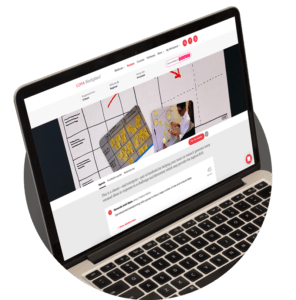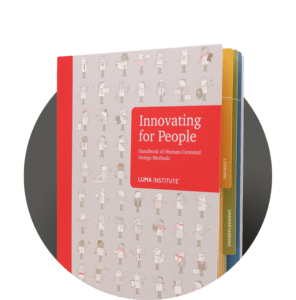Method overview
You can think of a schematic diagram as an x-ray of the skeleton of your concept. It’s the structure on which all the other components will depend, supporting their function and flow. Thoughtfully considering the compositional makeup of elements, before getting caught up in the details, is an important early step in development.
A schematic diagram allows your team to collaborate on how the idea will work as a functional system. Don’t focus on refinement here; instead, experiment with the best arrangement of parts to determine the ideal system. Using symbolic drawings, you need only show the compositional makeup of the basic parts and how they interact with or transition from one element to the next. Although it may sound technical, Schematic Diagramming can be used in nearly any project, from structuring screen layouts, to coordinating navigation, to sequencing the steps in a service experience. Use this method to guide your team in thinking holistically about an idea first to ensure that it is structurally sound.
The benefits of this method
- Shows the structure of a proposed solution.
- Helps you work out functional details.
- Builds a shared understanding.
- Informs subsequent design activities.

Quick guide
- Identify an idea or concept to develop.
- Assemble a diverse group of collaborators.
- Equip them with a set of basic drawing materials.
- Determine the basic elements to be included.
- Render each element with stylistic simplicity.
- Compose the elements in a clean and clear way.
- Adjust the size and weight of elements for emphasis.
- Arrange the overall diagram in an orderly manner.
Helpful hints
- Keep it skeletal. Avoid the use of realistic pictures.
- Use color sparingly.
- Use a grid structure to line things up.
Combining LUMA methods into design recipes
The methods in the LUMA System are great on their own, but they are really powerful when combined into design recipes. Just like when you combine ingredients to make a tasty meal, you can also combine design methods to address challenges such as improving workplace culture or uncovering customer insights.
An example of a recipe from LUMA Workplace®:


Want to learn more about LUMA methods?


